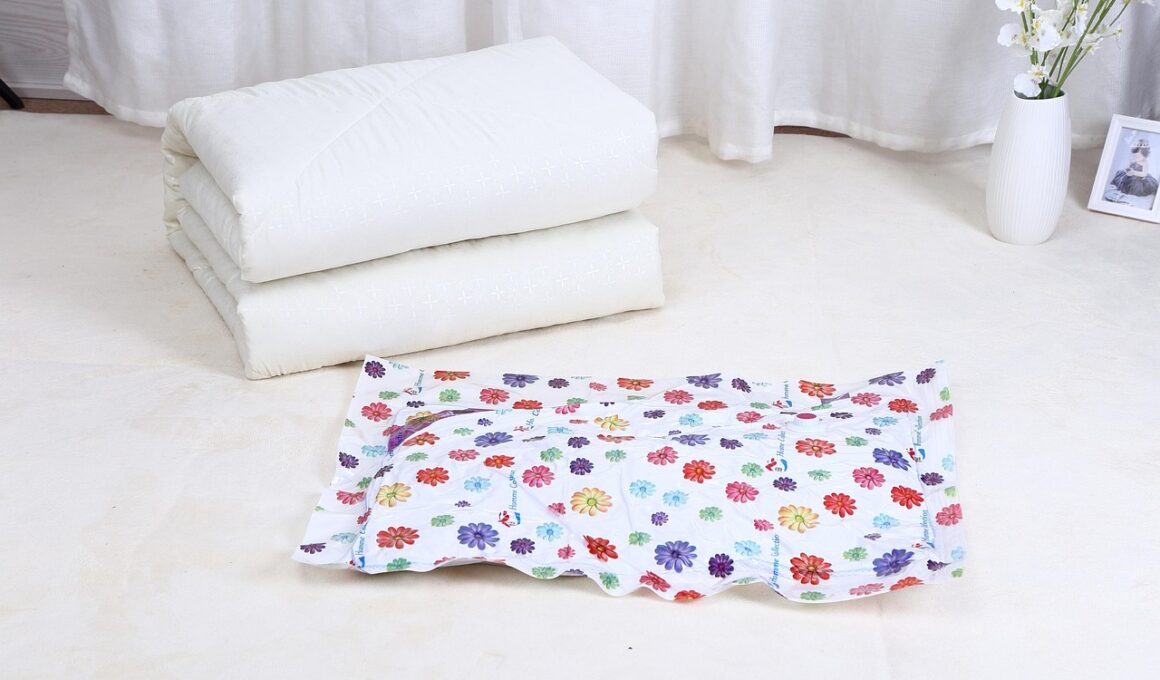The Benefits of Compression Assistive Devices in Injury Prevention
Compression assistive devices play a vital role in injury prevention and rehabilitation, effectively reducing recovery times and enhancing performance. Athletes and active individuals can benefit from these innovative devices, as they help to improve circulation during physical activities. Enhanced blood flow not only reduces the risk of injuries, but it also aids in quicker recovery from existing injuries. Many users report decreased muscle soreness and fatigue when utilizing compression garments. Furthermore, these devices provide a sense of support, adding psychological benefits alongside physical ones. Compression assists in the stabilization of muscles, thus minimizing the risk of strains and sprains. Its application is widespread, ranging from athletes to rehabilitation patients and everyday individuals seeking pain relief. Compression bandages, sleeves, and socks are common types used for protection and support in various settings. These devices are user-friendly and can be worn seamlessly throughout daily activities. With consistent use, they contribute significantly to long-term joint health. Investing in high-quality compression devices ensures optimal benefits from injury prevention strategies. Many athletes now consider these devices essential gear, integrating them into their injury prevention routines.
Compression devices are engineered to fit snugly around muscles and joints, promoting proper blood circulation. These assistive devices often come in various sizes and designs, which cater to different body shapes and particular needs. Proper fit is crucial, as an ill-fitting device can lead to discomfort and reduced effectiveness. Many brands offer adjustable options, making them more accessible for a wider audience. The materials used are typically breathable, moisture-wicking, and lightweight, ensuring that wearers remain comfortable during physical exertion. Users appreciate that these assistive devices can be worn under everyday clothing, thus making it convenient for consistent use. The benefits are not limited to sports; anyone engaged in physical labor or recovery from surgery can enjoy the supportive effects of compression. Many healthcare professionals recommend these devices as they are effective in managing conditions like venous insufficiency and other circulation-related disorders. Through enhanced performance and injury prevention, compression garments are becoming increasingly popular. Online retailers and specialty stores provide ample selections, allowing consumers to find the right fit and style. The accessibility of information about these devices has further increased their popularity among health-conscious individuals.
Scientific Backing for Compression Therapy
Numerous studies support the efficacy of compression assistive devices in promoting recovery and injury prevention. Research indicates that wearing these devices can significantly improve athletic performance by enhancing endurance and reducing muscle fatigue. One study found that participants wearing compression socks exhibited improved performance in distance running, attributed to better blood flow to the muscles involved. Compression garments help manage lactic acid buildup, leading to delayed onset muscle soreness (DOMS), which can be debilitating. Scientific studies describe how the application of compression can also reduce swelling in post-surgical patients or those with traumatic injuries. By limiting excessive movement, they help in providing a stable environment for healing. Studies also suggest improved proprioception, or the body’s awareness of its positions, which can aid athletes in maintaining proper form during workouts. Furthermore, individuals recovering from injuries report feeling more secure and confident when using these devices. Awareness of science-based benefits encourages more people to incorporate compression into their lifestyle. As research continues, the field is likely to expand, providing additional insights on optimizing the use of compression technology in everyday life.
More than just physical recovery, compression devices offer psychological advantages too. Wearing these devices can boost an athlete’s confidence, especially during competitive events. The feeling of added support encourages individuals to push their limits, reducing the fear of injury. Additionally, the visible benefits, such as reduced swelling, can motivate continued usage. The embrace of self-care practices is growing, and compression devices fit well into this trend, promoting both physical and mental wellness. As more employers and health professionals highlight the importance of injury prevention, integrating compression into workplace wellness programs seems promising. Dynamic tasks in various careers can lead to injuries, making the availability of such devices crucial. Workplaces may benefit from offering or recommending the use of compression garments for employees engaged in physically demanding occupations. Community programs focusing on educating the public about injury prevention also have the potential to incorporate this technology. By spreading awareness about the role of compression in both professional and everyday contexts, a healthier society can emerge. With ongoing innovation, the market may see smarter designs that further enhance efficiency and comfort in injury prevention strategies.
Choosing the Right Compression Device
Selecting the right compression device requires understanding one’s individual needs and preferences. Variations in pressure levels, types of materials, and intended use must be evaluated. Devices can be categorized based on their target areas, such as full leg compression or targeted joint support. Users should assess the recreational activities they engage in, as that determines the ideal choice. Athletes may prefer lightweight, breathable options that allow for maximum mobility during workouts. **Rehabilitation patients**, on the other hand, may need firmer support to stabilize injuries. It’s also essential to consider the specific condition being addressed, as some individuals may have underlying health issues affecting choices. Seeking advice from physicians or certified trainers can provide invaluable support in making an informed decision. Reading customer reviews and researching credible sources also aids in determining the best fit. Many brands offer reliable warranties and satisfaction guarantees to ensure consumer confidence. Comparing different brands against unique requirements helps clarify the options available. Ultimately, investing in the right compression device maximizes benefits while minimizing risks of future injuries or complications during physical activities.
Incorporating compression devices into regular training regimes aids in maintaining optimum physical health and performance. To ensure the longevity of these devices, following manufacturer care instructions is necessary. Proper cleaning and maintenance extend the life and effectiveness of compression garments. Regular inspections are also encouraged to identify signs of wear and tear. Knowing how long to wear compression during specific activities is vital for maximizing benefits. Generally, using them during workouts can be advantageous for improved circulation; however, they can also be utilized post-activity for recovery. Creating a schedule for use will help to normalize this practice, making it part of one’s fitness routine. It is common for athletes and fitness enthusiasts who regularly utilize compression devices to establish supportive communities, sharing tips and experiences. This shared knowledge contributes to making informed choices regarding products and usage methods. Furthermore, joining workshops or community fitness events highlighting these devices can increase awareness. As more individuals adapt to incorporating compression products, the potential to witness significant improvements in injury-related statistics grows. Ongoing education will empower consumers in making healthier choices moving forward.
The Future of Compression Technology
The future of compression technology looks promising with continuous advancements in materials and design concepts. Innovations such as smart textiles could revolutionize assistive devices, integrating technology directly into fabrics. Imagine wearing devices that monitor circulation levels or adjust pressure based on activity. This future vision isn’t far-fetched as many companies explore solutions to elevate wearability and comfort further. Additionally, techniques like 3D printing may personalize fit and designs tailored for individual needs. Development of more inclusive options benefits users across different demographics, addressing the unique challenges faced by people worldwide. Increasing demand for effective injury prevention is pushing manufacturers to innovate rapidly. Consumers are looking for multifunctional products that address various aspects of fitness and rehabilitation. This shift may lead to the creation of compression devices capable of catering to more conditions beyond injuries. Enhanced designs may simultaneously target a vast range of comfort and performance issues while ensuring individuals stay active and healthy. As technology becomes intertwined with rehabilitation practices, the role of compression in injury prevention will further solidify its place in daily life.
In conclusion, the culmination of scientific evidence, anecdotal benefits, and advancements in compression technology make it a valuable component of rehabilitation. Encourage testing various assistive devices to find the best fit for optimal injury prevention. Awareness and education surrounding compression technology promote healthier lifestyles in communities. Incorporating these products effectively ensures athletes and active individuals can compete safely, with reduced risks. With growing knowledge in the field, society can progressively optimize rehabilitation practices, reducing long-term injury costs. The ongoing discussion regarding injury prevention will deepen, heightening interest in proactive measures. Individuals, communities, and organizations play vital roles in nurturing this forward momentum. By investing in effective technology, acknowledging its benefits, and actively recommending these devices, a healthier future awaits. The choice of compression devices often reflects a commitment to personal health. Sporting communities and professionals continue to advocate for understanding these tools for better performance in various physical endeavors. Stay informed on innovations in the assistance device market to remain at the forefront of injury prevention. Together, embracing wellness practices prompts individual and collective benefits, driving towards a healthier lifestyle for all.


